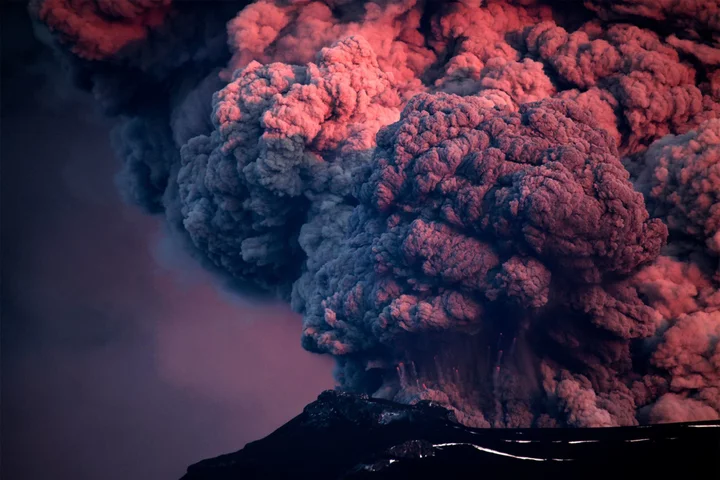The people of Iceland are bracing for what could be the country’s most devastating volcanic eruption in 50 years, with a small fishing town at risk of being destroyed.
There’s a significant likelihood of magma busting to the surface over the coming days at Grindavik, home to over 3,600 people, the Met Office said on Sunday. The area has been rocked by earthquakes for more than two weeks, and over the weekend, several roads and other structures were ripped apart.
The town, 40 kilometers (25 miles) from the capital city, was hastily evacuated late Friday with many fleeing so fast that pets and livestock were left behind.
Read More: Iceland Clears Town Near Blue Lagoon on Volcanic Eruption Risk
The area had lain dormant for almost 800 years until early 2020, when intense seismic activity started on the peninsula. Magma rose to the surface in 2021, only to emerge again in August 2022 and July this year. Until now, the eruptions were relatively small fissures in remote areas and posed little risk to people or infrastructure.
The island nation, which calls itself the land of fire and ice, has about 30 volcanic systems and more than 600 hot springs. It is one of the most geologically active places on earth due to its position on the mid-Atlantic ridge where the North American and Eurasian tectonic plates rift apart.
Though Iceland is used to eruptions, residents haven’t experienced an event threatening inhabited areas at such a scale since 1973, when part of a town of some 5,000 people was buried under lava in the Westman Islands. Fatalities from eruptions are rare.
One of the most disruptive volcanic events in the Nordic country’s recent history occurred in 2010, when Eyjafjallajokull erupted in an explosion that released a plume of ash so vast that it grounded air traffic across Europe for weeks, resulting in the cancellation of 100,000 flights and affecting over 10 million people.
Air regulations have since changed, meaning that such widespread interruptions would be unlikely this time around, according to Isavia, which runs the country’s airports. Still, should an eruption begin, flights from Iceland’s main airport Keflavik would be grounded for at least an hour to allow authorities to generate an ash forecast.
At Grindavik, geologists’ models show a 15-kilometer magma intrusion underground just northwest of the town, according to the Met Office. Seismic activity has slowed since Friday, which can indicate that magma is moving closer to the surface, officials said.
“The most likely scenario is that this leads to an eruption,” Magnus Tumi Gudmundsson, professor of geophysics at the University of Iceland, said by phone. “The likely eruption site is very close to Grindavik,” he said. That could cause considerable damage to properties.
A somewhat less likely scenario is that an eruption would occur further north, he said. That would put it in the vicinity of Iceland’s biggest tourist attraction, the Blue Lagoon spa and HS Orka hf’s Svartsengi power plant, which provides heat to about 30,000 inhabitants of peninsula, as well as a number of other businesses centered around geothermal heat.
It cannot be ruled out that the dyke intrusion would extend into the sea, creating an explosive event and spewing out volcanic ash.

